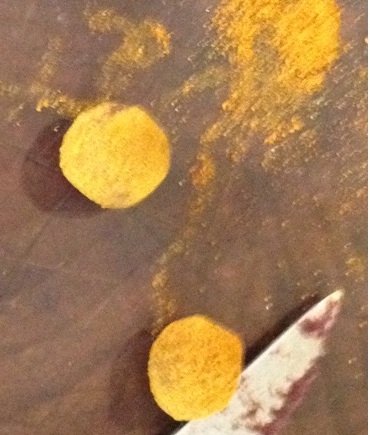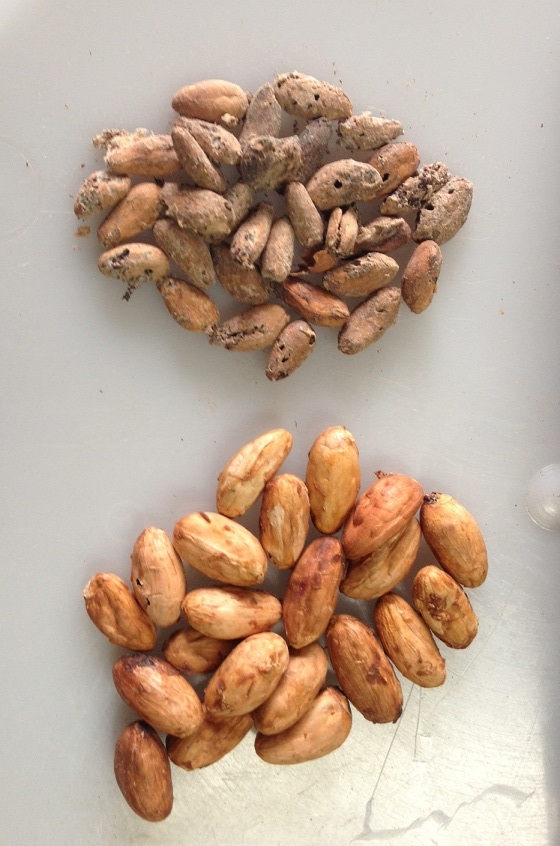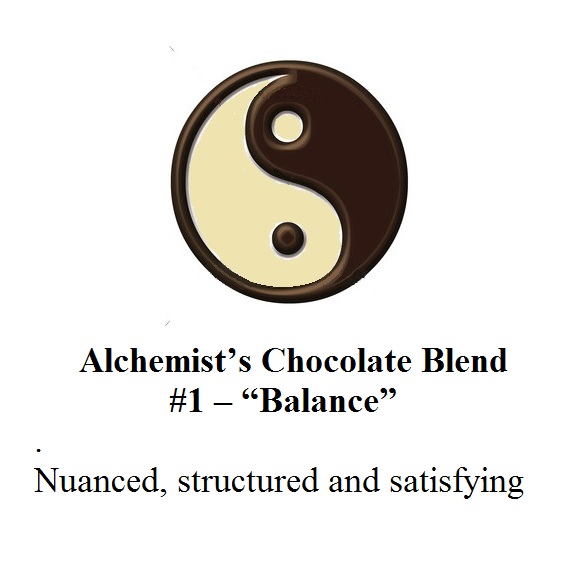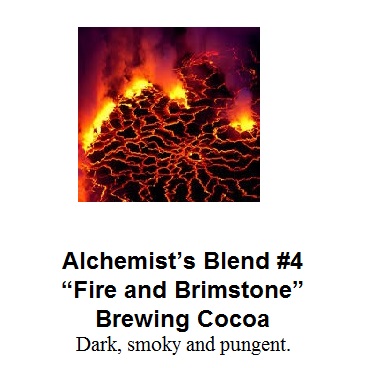Before we get to this week's Ask the Alchemist; a few announcements. First, the Holidays. We will be closed:
12/24/14 - 1/4/15. Basically Christmas Eve through the New Year's weekend.
I'll be answering e-mail off and on, but no shipping in this time. It is family time!
You have until 9 am PST 12/23/14 to get orders in if you want them to ship before we close.
With that in mind, I would not advise waiting until the new year if you want any of the Peru Maranon. It was well over half gone (hundreds of pounds) in two days. The last bag is opened and going fast. You have been warned.
On to this week's question.
Do you have any tales to tell about additional ingredients you’ve added to the chocolate during the refining process (nuts, toasted coconut, coffee, salt, etc.). Other than water content, anything to watch-out for?
Well, er, um…..if I can’t talk about water to watch out for, then I can’t think of a whole lot. That seems to be the place where all issues start. So instead I will just talk about things I’ve tried via free association.
Praline. 50/50 hazelnuts/sugar. You can make it either with granulated sugar or sugar you have caramelized. I’ve tried it both ways and as pretty as the sheets of burnt umber sugar glass were, they loved to suck up moisture, and in the end, I liked the flavor of the granular better.
Nutella. This is easy. Just roast up your hazelnuts as you would the cocoa and mix in anywhere from 1/4 – 3/4 in with your chocolate. It really depends on what you are after. It takes a bit of a balance if you want it just solid or just spreadable but it’s not all that hard. Start 50/50 and go from there.
Nut butters. Same. If you can do chocolate, then you can make nut butters. And they are actually easier. Do keep an eye out if you try it raw. The moisture can cause shearing against the oil, and can still seize.
And remember for all those, dry sugars. No honey, agave, etc. unless you stir it in by had at the end. Just not in the Melanger.
From a request by my daughter, we have made unsweetened milk chocolate more than once. At 20-30% milk powder, there is plenty of residual sweetness from lactose to make a great chocolate.
And from there, if you toss in roasted coffee (2-6 oz / lb) then you can end up with a really interesting ‘mocha’ bar. The coffee will refine right down.
On the same coffee rift, if you start with white chocolate, and add coffee, you have what I call a latte bar. And of course you could add coffee to any dark chocolate.
Spices for me come to mind next. Nutmeg. Cinnamon. Cardamom. The all grind up just find and add some great flavor options. And of course, peppers are hot right now (yes, that was on purpose). You can add any selection of dried peppers right to the Melanger. I do like to pre-powder these, but if you do, be REALLY careful. You do not want to be breathing in hot pepper dust. Chipotle chocolate? Damn straight!
That leads me kitchen spices. The most fun I have had was with one that had parsley, sage, rosemary and thyme. It’s amazing how many people could not suss out the flavors. It was very familiar but so out of context it stumped nearly everyone. Basil chocolate anyone? How about tarragon? Lavender?
What else is herb like? Friendly chocolate? Sure, if that is your thing. It would certainly be aromatic. More to my taste would be something else aromatic. How about hops! Hopped chocolate! Just remove the stems and in it goes. And 5-10 % malt (dry) and suddenly you have ‘beer’ chocolate.
Finally, if you really have to indulge your wet ingredients, there might I suggest truffles? The centers and coatings just spiral out of control. I’ve worked out this year that you don’t need cream at all for a truffle filling. Any liquid will do. Just keep the proportions 2:1 chocolate to liquid and you are there. This year I and friends made over 1300 truffles out of the 50+ pounds of various evaluation chocolate I had laying around. Just look at what you can do.
Cherry/rum. Just blend rum pot cherries in a blender and strain. That’s your liquid.
Pear liquor
Scotch/sugar
Rose water
Orange water
Chai (just steep any number of teas in your cream and away you go)
Earl Grey (for my daughter)
Eggnog (my personal favorite)
And the filling does not have to start with dark chocolate. Grab one of those variations above. Chipotle? Mocha?
And then coatings!!!!
Sure, anyone can roll them in cocoa powder. But how about powdered rose petals? Or nutmeg. Coffee. Cinnamon. Cardamom? Yes!!! For all those you really need to ‘cut’ them with a bit of sugar. It’s amazing how strong they are. 1:5 – 1:10. But it is up to you. Remember that earl grey center? Earl Grey and sugar makes a great coating! You have that interesting blueberry tea. Sure! Raspberry? That works! It’s really up to your imagination.
I’ll leave you with this as the height of our 2014 truffle fest experimentation.
Chai/eggnog center with a Hot ginger/curry/cardamom coating on a tiny 1/4 oz truffle ‘shooter’. So intense but gone in a flash.

Happy Holidays everyone.


















